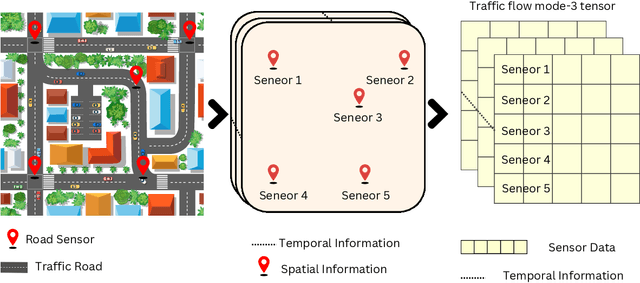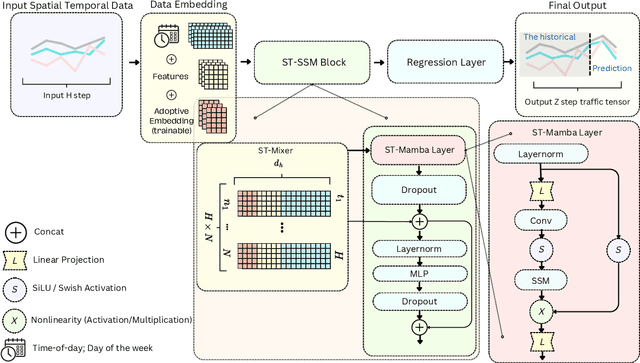ST-SSMs: Spatial-Temporal Selective State of Space Model for Traffic Forecasting
Paper and Code
Apr 20, 2024



Accurate and efficient traffic prediction is crucial for planning, management, and control of intelligent transportation systems. Most state-of-the-art methods for traffic prediction effectively predict both long-term and short-term by employing spatio-temporal neural networks as prediction models, together with transformers to learn global information on prediction objects (e.g., traffic states of road segments). However, these methods often have a high computational cost to obtain good performance. This paper introduces an innovative approach to traffic flow prediction, the Spatial-Temporal Selective State Space Model (ST-SSMs), featuring the novel ST-Mamba block, which can achieve good prediction accuracy with less computational cost. A comparative analysis highlights the ST-Mamba layer's efficiency, revealing its equivalence to three attention layers, yet with markedly reduced processing time. Through rigorous testing on diverse real-world datasets, the ST-SSMs model demonstrates exceptional improvements in prediction accuracy and computational simplicity, setting new benchmarks in the domain of traffic flow forecasting
 Add to Chrome
Add to Chrome Add to Firefox
Add to Firefox Add to Edge
Add to Edge